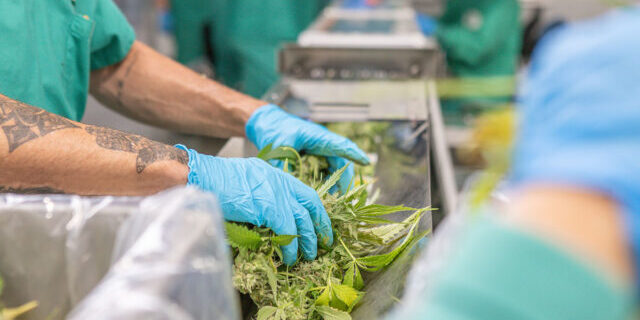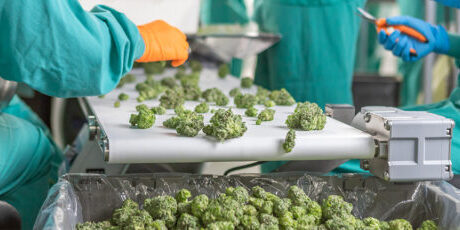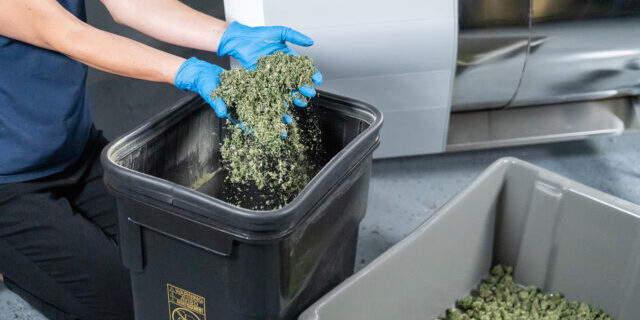The Complete Guide to Vertically Integrated Cannabis Operations
The concept of a vertically integrated cannabis operation has become increasingly significant to cultivators in recent years, as the market has undergone rapid growth.
Increasing legalization and acceptance of medical and recreational cannabis worldwide is facilitating the development of an exceptional market opportunity. By 2030, analysts predict this market will grow at a CAGR of 34.03% to a projected value of $444.34 billion.
Vertically integrated operations empower high-end cannabis companies to scale their operations, maintaining control over various stages of the production process, from cultivation and extraction to distribution. It enables meticulous oversight of the production chain and can help reduce costs while improving potency, purity, and consistency in finished products.
Here’s your guide to vertically integrated cannabis operations.
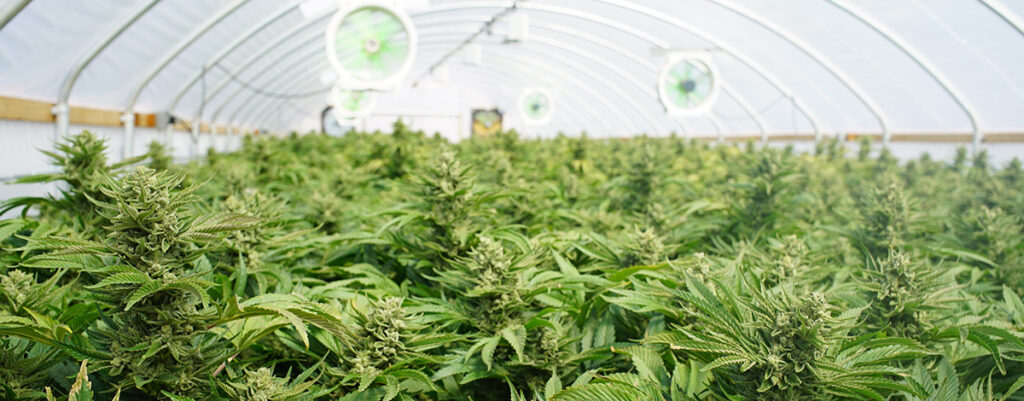
Cannabis Industry Evolution: The Rise of Vertical Integration
Over the past few decades, the cannabis industry has undergone significant transformation, evolving from a largely illicit market, into a burgeoning and legal industry. Since California became the first US state to legalize medical cannabis, the market has transformed.
As of April 2024, recreational marijuana is now legal in 24 states throughout America, and legalization in various parts of the world, from Australia and Canada to Europe, is opening the door to markets for cultivators. Vertical integration as a concept for enhancing manufacturing practices, enabling automation, and controlling scale has grown in popularity ever since.
In 2021, only 47% of cannabis cultivators reported that their operations were vertically integrated. By 2022, more than 60% of research participants said they represented vertically integrated operations. In some parts of the world, vertical integration is even mandated by regulations, requiring companies to rethink how they staff and manage their operations to achieve licensure.
Today, however, vertical integration isn’t just an important consideration for companies applying for license agreements. It helps businesses ensure product consistency and quality, gain customer trust, and increase brand loyalty.
Additionally, by controlling the supply chain, companies can often better navigate the regulatory environment, achieve economies of scale, and increase profitability.
Components of Vertical Integration
Vertical integration describes the systematic connections between the affairs of a company. A vertically integrated cannabis company directs every aspect of the process from cultivation and harvesting to pre-processing, extraction, packaging, and distribution.
Cultivation

Cultivation is the cornerstone of cannabis production. High-quality cultivation practices are essential for delivering superior products and increasing profitability. In recent years, companies in various sectors have embraced advanced techniques, using indoor cultivation tools, hydroponics, and aeroponics to control environments and increase yield.
We’ve also seen an increase in the number of cultivators investing in strain development and genetic optimization strategies, pivotal to creating attractive products that cater to specific consumer preferences, with targeted cannabinoid profiles and terpene compositions.
In this landscape, automation and technology have become critical to success. Advanced automated systems can control irrigation, lighting, and climate to reduce human error and monitor plant growth conditions throughout the growth process.
Post-Harvest Processing

Following cultivation, cannabis plants undergo a comprehensive post-harvest phase, allowing a cannabis company to sort through plants and buds. From there, they are further prepared for product creation. Often, drying and curing techniques are leveraged to preserve cannabis quality. Modern methods like specialized curing chambers help ensure consistent moisture levels and enhance the potency and flavor of the final product.
Innovative trimming tools are used to carefully remove excess stems and leaves from cannabis buds, processing large plant volumes automatically while maintaining high standards of quality.
The right trimming tools can even help preserve valuable plant materials for creating additional products. Whether using hand trimming or automated trimming strategies, companies must leverage effective post-harvest handling techniques to prevent the degradation of cannabinoids and terpenes. Consistent control over the trimming process and high-quality trimming machines minimize risk.
Extraction and Refinement

For a cannabis business leveraging the momentum of the burgeoning market for cannabis concentrates, extraction and refinement are critical steps. Currently, the extract market is growing faster than any other sub-segment of the cannabis industry, as consumers prioritize variety and potency.
Various extraction methods, from solventless extraction (such as using a rosin press) to solvent extraction using CO2, ethanol, and hydrocarbon are often considered by many different cultivators. Just as technology and automation have positively affected the trimming landscape, it has also had a significant impact on extraction strategies.
Closed-loop systems, supercritical CO2 extraction, and similar methods can enhance yield and potency while also minimizing compliance issues by reducing environmental impact. Innovative purification methods, such as distillation can also enhance product quality by removing excess components (like chlorophyll or plant matter) from an extract.
Manufacturing and Product Development

The manufacturing process of any cannabis company, including the extraction equipment it uses and the approach it takes for automation, can vary. For many companies, there’s an opportunity to increase revenue with the development of cannabis-infused products.
In fact, by 2030, the cannabis infused products market is set to reach a value of $105.51 billion. In this landscape, there’s often a significant focus on creating consistent, attractive products that appeal to a wide range of flavor preferences.
Regardless of the products a cannabis business creates, a strong focus on consistent and effective formulation techniques is essential to ensure each product delivers the intended effects. Additionally, innovative packaging strategies are crucial to enhance product shelf life and user experience.
Distribution and Retail

Vertical integration in a cannabis company extends through to retail distribution. A vertically integrated company invests heavily in connecting the stages of its supply chain and ensuring efficiency through the close management of logistics, inventory, and distribution networks.
At the same time, during packaging, distribution, and retail operations, cannabis businesses need to ensure they adhere to regional laws regarding labeling, packaging, transportation, and sales to minimize legal risks. Automation and carefully established standard operating procedures can help to ensure consistency, and enhance customer experiences in retail environments.
Benefits of Vertical Integration
Successfully implementing vertical integration into a cannabis operation can be a complex and time-consuming process, which requires a combination of the right processing techniques, standard operating procedures, and technologies. However, there are benefits.
By controlling every stage of the production process, these companies can optimize operations, remain agile in a dynamic market, and achieve cost efficiency.
Fundamentally, vertical integration enhances:
Quality Control
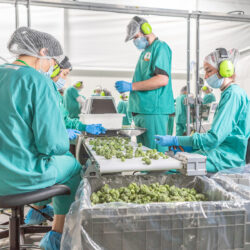
Vertical integration provides unparalleled control over the entire supply chain, ensuring consistency and quality across all stages of production. Everything, from the trimming process to extraction methods, is standardized to reduce inconsistencies.
Companies implement rigorous testing protocols to ensure consistency throughout the supply chain and that the final products meet specific quality benchmarks and standards. Rigorous testing strategies ensure companies can eliminate risks and adhere to customer requirements.
Additionally, vertical integration reduces reliance on suppliers. Over-reliance on external suppliers can introduce risks such as supply chain disruptions, variability in product quality, and compliance issues. Vertical integration mitigates these risks by allowing companies to control their supply chain.
Cost Efficiencies
Leveraging automation, technology, and standard operating procedures within vertically integrated processes can lead to significant cost savings. By consolidating operations, vertically integrated companies can benefit from economies of scale. Bulk purchasing of materials, centralized operations, and streamlined processes reduce overall costs.
Comprehensive control over the various stages of harvesting, production, and distribution can help companies produce high-quality items at a lower cost. For instance, a single integrated facility can serve multiple functions, reducing the need for separate locations and extra staffing costs.
Plus, integration reduces the reliance on third-party vendors who can often change their pricing based on market dynamics.
Market Agility

On a broad scale, vertical integration can enhance a company’s ability to remain agile in the cannabis industry. Vertically integrated companies can quickly adjust production based on market demands and trends, exploring new products when preferences emerge.
They can experiment with new strains, formulations, and delivery methods, without being constrained by the limitations of external suppliers. Offering a diverse product portfolio ensures companies can pivot to suit changing market dynamics and increase customer loyalty and satisfaction.
Challenges and Considerations
Notably, there are still challenges to overcome in regard to vertical integration. The first, and potentially most complex for many cultivators involves navigating complex and varying regulations. In some states, such as Hawaii and Florida, some level of vertical integration is required, as state regulators argue it addresses federal tax issues and maintains consistency.
In other regions, the regulatory framework is changing. For instance, Colorado previously required retailers to grow 70% of what they sold, and now this is no longer the case. Remaining compliant with ever-changing guidelines requires companies to implement robust programs that include regular audits, real-time monitoring of regulatory changes, and employee training.
Aside from the compliance challenges, finding the finances required to enable vertical integration can be complex. There are various expenses to consider, from the price of paying for automated tools to the overheads involved in various production processes.
Companies need to find ways to raise capital and manage risk as they grow by diversifying investments, maintaining cash reserves, and developing contingency plans to adapt to market changes. For smaller business owners, the initial costs may simply be too high.
Additionally, the operational complexity of managing a vertically integrated business is much higher. Companies need teams with expertise in cultivation, processing, distribution, and retail. Additionally, they need access to the right technologies to ensure efficiency and compliance, from advanced cultivation solutions to automation systems and data management platforms.
Integrating these technologies, and hiring the right staff can be complex, costly, and time-consuming.
Technology and Innovation in Vertical Integration

The good news for any evolving cannabis business investing in the future of vertical integration is that technology is evolving to pave the way for new opportunities. Data analytics and artificial intelligence systems, for instance, can analyze vast amounts of data from cultivation to retail, helping companies identify patterns that inform decision-making.
AI algorithms can even help predict plant and harvest issues, optimize growing conditions, and assist with forecasting market demands. According to Mordor Intelligence, AI in the agricultural market (which also applies to cannabis cultivation) is currently growing at a CAGR of 22.55%, highlighting the growing demand for this technology.
Automation technologies are emerging to streamline operations, enhance efficiency, and assist in ensuring product consistency, reducing labor costs and human error simultaneously. Additionally, blockchain technology is driving enhancements in the traceability and transparency of the cannabis supply chain. Blockchain creates an immutable ledger of transactions, ensuring every stage of production from seed to sale is accurately recorded.
Future Trends in Vertical Integration
The future of vertically integrated cannabis operations will further be enhanced and shaped by emerging technologies. AI and machine learning, for instance, will have an impact on future operations.
AI and machine learning will further refine cultivation techniques, optimizing growth conditions and enhancing yield predictions. Advanced devices will enable real-time monitoring and automation of environmental controls, ensuring optimal conditions for each growth cycle.
Additionally, we’re likely to see companies embracing new technologies to help them implement more sustainable and scalable models, boosting energy efficiency. Hybrid vertical integration models that align internal operations with strategic partnerships will also enable greater flexibility and innovation. All the while, regulatory guidelines will continue to transform.
Changes in regulatory guidelines will significantly influence how companies embrace vertical integration and push companies to focus on remaining agile so they can capitalize on new market opportunities, and avoid risks as they emerge.

Vertical Integration in the Cannabis Industry
Vertical integration isn’t a new concept in the cannabis industry, but thanks to the rise of new technology, the scaling market, and the evolution of regulatory requirements, this concept is gaining more attention. By every aspect of the supply chain, from cultivation to retail, vertically integrated companies can ensure consistent product quality, reduce operational costs through economies of scale, and quickly respond to market demands and trends.
However, the path to success starts with the right strategy, insights, and technology. If you’re considering a vertically integrated approach to your cannabis operations, Mobius Technologies can offer the guidance and technology you need to enhance your supply chain and workflows.
Contact Mobius today to learn how we can help you optimize your approach to vertical integration, and scale the future of your cannabis business.
Let’s Talk Today
Utilizing the right operating procedures, you can expect enhanced product quality. See how Mobius can help with your cannabis automation.


